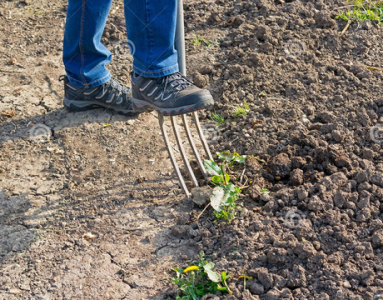The RGS Allotments are, in general, set on London Clay. This heavy soil has some challenges for cultivation. Success revolves around good nutrients and, importantly, good drainage.
In general you don’t dig a clay soil in January – the autumn is better, when the soil is relatively dry. If wet in Winter it’s best not to walk on the soil until it dries out a little, usually in mid-Spring.
You may find it easier to use a Digging Fork – not a spade…. Read why here

Getting the best out of a clay soil…. Quick facts from the RHS
Clay soils contain more than 30 percent fine clay particles
Clays swell and shrink as they wet and dry, effectively cultivating themselves
Clay soils take longer to warm up in spring
Wet clay soils are easily damaged when dug or walked on
Drought is much less damaging on clay soils than others soil types
Five steps to improving clay soils:
The links in this list lead to further advice from the RHS.
- Make raised beds to assist drainage and to reduce trampling of the soil
- Consider adopting a ‘no-dig’ regime, especially in raised beds, as these suit clay soils well
- Some, but not all, clay soils respond to extra calcium, which causes the soil particles to clump together. Where the soil is acid, lime can be applied, but elsewhere it is better to add gypsum. Gypsum is the active ingredient of many commercial ‘clay improvers’. Test on a small area in the first instance to ensure it is effective on your type of clay
- Dig in plenty of bulky organic matter such as manure or, ideally, composted bark, as this can make a noticeable improvement to the working properties of clay
- Apply organic mulches around trees, shrubs and other permanent plants in Spring as these will reduce summer cracking and help conserve moisture

